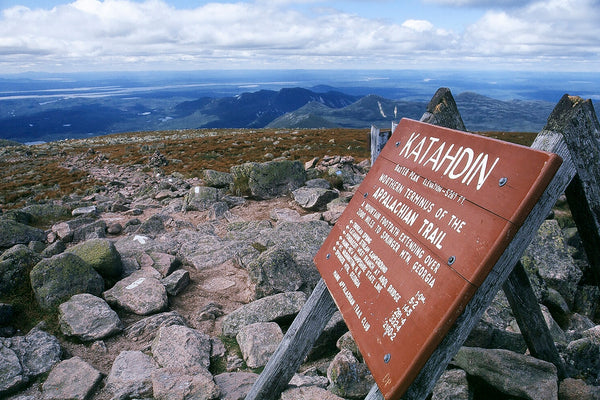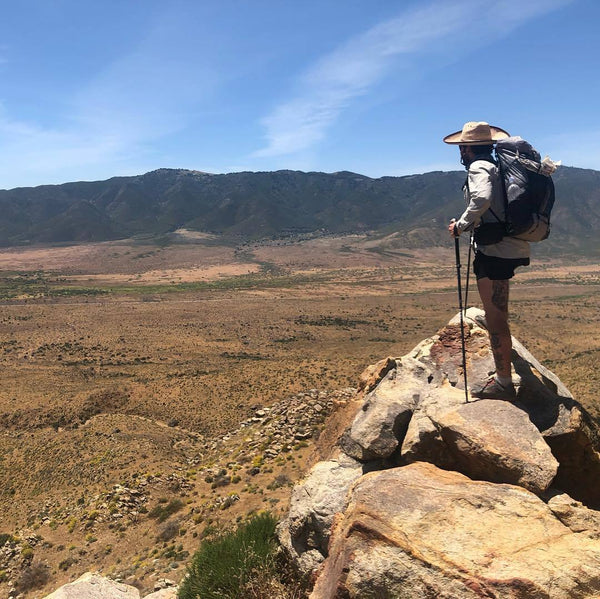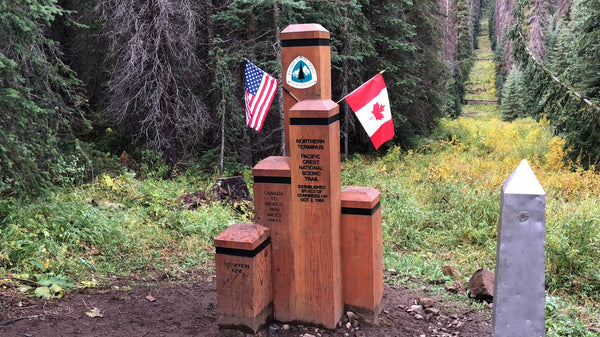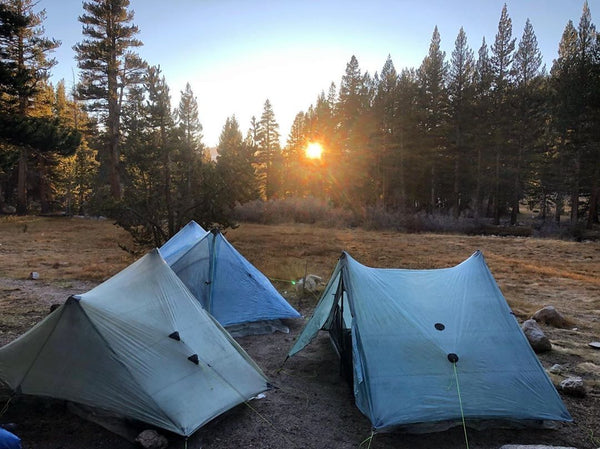NOBO or SOBO
NOBO vs SOBO, ah, the age-old debate. A question that needs answering from all thru-hikers. Most thrus tend to be NOBO, especially when it comes to those triple crown trails. These days, a SOBO hike can be seen as kind of a badge of honor for those angsty kids looking to go against the grain.
With all the info out there about heading north, we decided to get a little angsty ourselves and write a love letter for all you SOBOers out there. If you have never thought about hiking SOBO before, pay attention!
Advantages of Going SOBO
Going SOBO on the AT
Get the Hard Stuff out of the Way
A lot of hikers say you’re setting yourself up for disappointment starting at Katahdin. Why would you want to start with the hardest/most exciting parts of the trail? I would say, why wouldn’t you want to get the hardest part of the trail over first? Starting in Maine allows you to get the most grueling part of the trail done and over with. You won’t have to have the most difficult part of the trail looming over you for 1,000+ miles. Once you’re done with the Whites, you’ll be an animal devouring the rest of the miles all the way to Springer.

Going at Your Own Pace
Starting at Katahdin also means you don’t have to worry about Baxter park closing. If you are going NOBO you HAVE to get done before the park closes, and if you don’t then you’re SOL. SOBO removes the worry of not hiking fast enough.
Avoid a Northern WinterI personally hate being cold with every fiber of my being. Tackling the northern states in the summer means dealing with a southern fall/winter. It’s still gonna get cold, but you’re walking towards warmer weather, instead of winter...in Maine.
Less CompetitionSome people think that having fewer SOBO is a negative. Well it’s pretty great when you’re able to easily find a hotel in town or sleep in a shelter without 14 other stinky hikers snoring. When you hike with that NOBO bubble, you are competing with other hikers for everything. Hiking with fewer people means less competition.
Photo Credit- @krugiesara
Going SOBO on the PCT
Avoid Bugs
There are less bugs. Everyone knows that the PCT is notorious for mosquitos around the end of June/Labor Day. However, if you are SOBO you can routinely completely miss the mosquito window. Meaning you don’t have to deal with the biblical mosquito plague that all the NOBOs have to deal with.
It Won’t Rain on Your Parade
Less rain. You will be hitting up the rainiest sections of the PCT when there is not a lot of rain. You won’t be trudging through that wet rain that turns to sleet that turns to snow that turns to sleet that turns to rain in Oregon and Washington like those NOBO’s. Instead you’ll have much clearer skies. We all know avoiding the rain can do wonders for your morale.
Cooler Desert Section
Finally after the Sierra’s dump you out into the desert section, you’ll be hiking it in the fall. Hitting the southern section of the PCT in the fall gives you a couple of advantages. The first advantage is water, it won’t be as hot, this means you can carry less water. Also, if you’re in the desert section of the PCT in late fall you don’t have to worry about unexpected snowstorms. Finally, you don’t have to hike in the desert in the early summer. Winning.

Photo Credit- @angusgus
Going SOBO on the CDT
Solitude
The CDT can already be a lonely trail, with most people going NOBO, SOBO can get really lonely. That being said, if you are hiking the CDT, you probably have done a couple of thru-hikes. The experience you have will let you really appreciate the solitude of the CDT. Stroll through remote areas of the country very few people get to see, and keep them all to yourself.
Not seeing a lot of people also means you have an incentive to make a connection with the people you do run into. On the CDT there aren’t going to be 5 other hikers at the next campsite, you have to make it a point to get to know the few people you do run into.
Less Snow
Less snow in all the right places, mainly Glacier National Park. A SOBO hiker should only get a small amount of snow at the passes in Glacier National Park.
Things to look out for going SOBO
On the AT
Bugs Bugs Bugs
Bugs! May through June is when Maines black flies swarm. They have a painful sting and it can itch for days. You also have to worry about gnats, horse flies, deer flies, and let’s not forget about mosquitos. All this to say, bring a headnet.

More Dropouts
Higher drop out rates, SOBOs finish at a lower rate than NOBO. So keeping spirits high will be a #1 priority if you want to finish.
Harder Start
It’s going to be really hard. You are immediately hitting the hardest part of the trail first. You probably don’t have your trail legs yet, and you are carrying more food than you normally would. There is no resupply in the 100mile wilderness, so you have to carry more food on that section than on the rest of the trail. Starting out super rough can be really discouraging or impossible for some.
On the PCT
The Snow Deadline
The main question you have to ask when going SOBO on the PCT is “when will it snow?” You have to make to it the Sierras by October at the latest. Once the sierras are covered in snow you have to wait until it thaws.
Border Crossing
A SOBO hike can be a bit of a logistical headache. It is illegal to enter the United States from Canada through the PCT. You will have to start your hike at Hart’s pass, from there hike to the border and go south.

Less Water
You have to be more cautious about water. Hiking in Southern California in the fall will mean you use less water, which is great because there is less of it. A lot of usual water sources can be dried up, some campsite faucets will be turned off because it’s late in the season, and there will be fewer water caches from trail angels.
On the CDT
Less Information
Lack of information. By far there is the least amount of information about the CDT, especially going SOBO. Doing research for this blog I personally didn’t find a lot of information. A lack of information can make planning very difficult, and changing plans on the fly a guessing game. Unlike the AT or the PCT which sees thousands of hikers a year constantly updating weather reports and water sources. The CDT doesn’t have an army of hikers helping each other out. You have to really rely on your skills and research and hope the latest info in Guthooks is up to date.

About the Author
Olivia Magee oversees Social Media at Zpacks and helps monitor trends within the industry. Her contributions to the hiking community includes her work with the American Conservation Experience where she performed trail maintenance in the Smoky's and across the Southeast.


